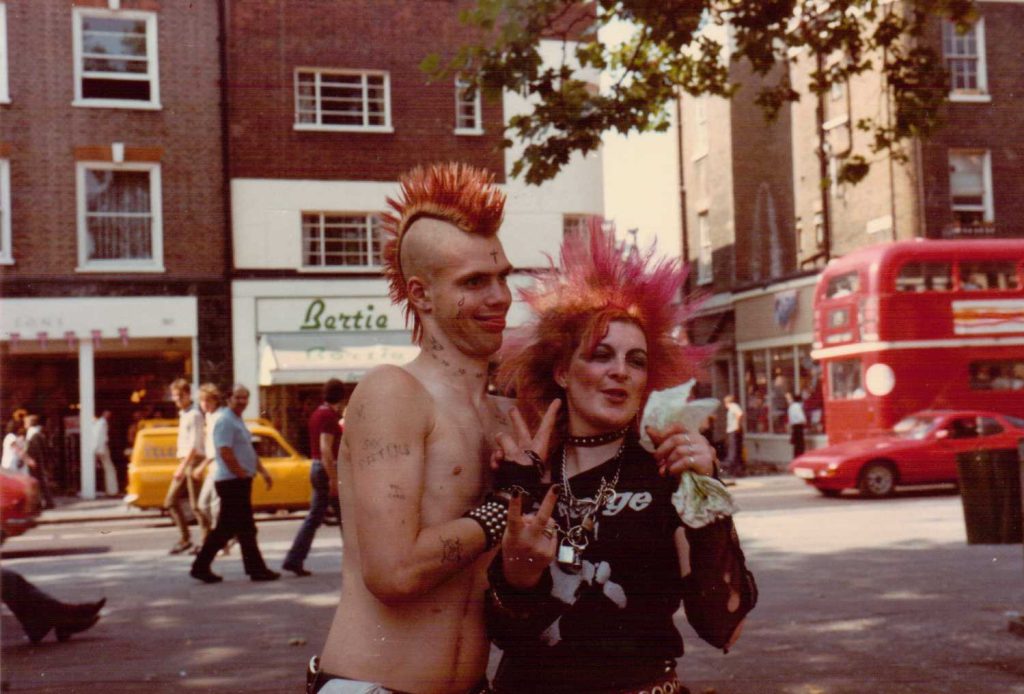What is a subculture?
From an etymological perspective, the word subculture must be divided into two parts to be deciphered. Sub is a Latin prefix meaning “below” or “under”, as seen in words like submarine and substrate. Meanwhile, culture derives from the Latin verb colere, which means “to cultivate.”
Over time, the term culture has come to encompass the beliefs, traditions, and behaviours shared by a group of people. Consequently, subculture retains the same semantic connotation as culture (see definition above) but specifically represents individuals that distinguish themselves from mainstream practices by embracing alternative ideals.
Subculture vs. Counterculture
At first glance, these terms may seem synonymous, yet they slightly differ in their relationship with the mass. A subculture distinguishes itself through specific attitudes, fashion, and hobbies, while still participating in the traditions and life structures (e.g a standard job, mundane events) of the broad society. Whereas countercultures reject dominant traditions and political norms, establishing an independent systems of values.
In simple terms, a counterculture is a more radical version of a subculture. However the two concepts generally coexist within the same cultural movement. One prevails over the other depending on surrounding social circumstances and the extremism of their members. Although for simplicity of text, this article will use the word subculture.
Historical examples are the hippie movement, advocating for peace and love, rejection of consumerism, and boho fashion, and goth culture, emerged in the UK during the 1980s, associated with bands like Bauhaus and Siouxsie and the Banshees, dark clothing, macabre art, and fascination with death.
Are social media aesthetics the new subcultures?
New digital aesthetics such as Clean girl, Cottagecore, Dark Academia, and Y2K fashion bear a resemblance to past subcultures but contemporarily differ in remarkable ways. Unlike traditional subcultures, which were grounded in real-world communities and concrete meeting places (e.g., Vivienne Westwood’s SEX boutique for punks or Caffe Trieste for beatniks), digital trends thrive in the online world with a focus on visual appeal rather than challenging society’s status quo.
Journalist Mireille Silcoff writes, “But at its deepest, a subculture could allow a given club kid, headbanger, or punk to live in a communal container from the moment he or she woke up to the moment she went to bed.”
On the contrary, social media aesthetics are seen as more fluid and open-minded compared to the subcultures of the 20th century, since they do not stem directly from political ideologies as the punks, hippies, or beatniks, but from a desire to experiment a delineated lifestyle.
As an example of a sociocultural impact driven by a subculture, the punk movement encouraged the DIY (do-it-yourself) approach to counteract commercial interests, which often compromise mental and physical health in favour of economic gain.
Nevertheless, even if not a by-product of politics and radical contesters of government systems as members of subcultures once were, digital communities can provide society with a greater multiculturalism through organising in-person conventions.

In conclusion digital semi-subcultures foster inclusivity for those who feel marginalised or in search of a designated identity to align with. However real-world social gatherings and community discussions could further enrich the emotional bond of participants. Also, the communal aspect of a subculture fosters the creation of new ideas across various domains, including politics, fashion, and art.

Barrett Dawson “DIY Democracy: The Direct Action Politics of US Punk Collectives”, Vol. 52, No. 2 (2013)


As you mentioned, the reduced importance of a physical meeting space for a subculture can be beneficial when it comes to accessibility and reaching people globally.
However, what I personally find the saddest about the decline of subcultures and rise of “aesthetics” is the depoliticisation of certain visuals and aesthetic choices. Nowadays, a lot of the fashion and other aesthetic aspects of these subcultures have been rebranded to a more consumer friendly form and their initial political messages have been shoved to the side. Politics are a vital aspect for subcultures, whereas “aesthetics” merely promote consumerism in most cases.